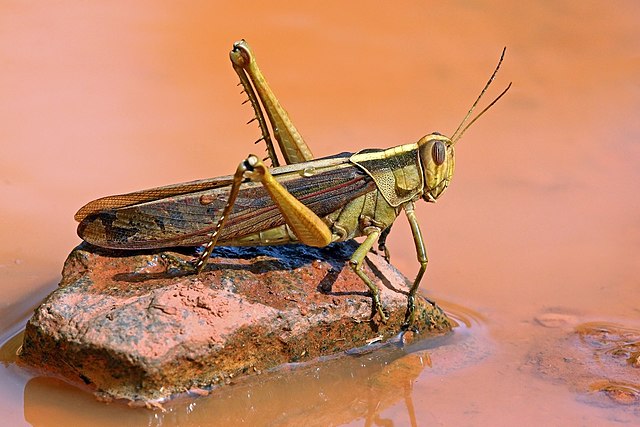Namibia and the Maghreb expect possible locust swarms later in 2025 and are preparing digitally and mechanically.
The cabinet of Namibia convened in early April 2025 to discuss potential outbreaks of pests including locusts that echo a 2024 scare.
Normal and above-normal rains in strategic farming areas such as the Zambezi have sparked this latest alert.
In 2024, minor cases of locusts pervaded the Zambezi basin and a part of Ohangwena in north-central Namibia.
The cabinet has already apportioned the north as a potential landing point for locusts after current sightings of armyworms.
Oshana, a densely populated area of the north-central of the country is presently under armyworm infestation. It is a key source of mahangu (pearl millet), a staple for 50% of the national population.
Overall, Windhoek’s warning owes to the fact that in 2023, brown locusts devastated the Kalahari-bordering Kharas and Hardap areas.
North Africa’s Spring Swarms
While the Southern Africa Development Community (SADC) region is anticipating, northwest Africa is already recording actual spring breeding of locusts.
On April 4, 2025, the Food And Agriculture Organization (FAO) warned of swarms hopping northward from the southern Sahara near Chad.
This March 2025 migration has shifted spring breeding sites to the southern parts of Libya, Algeria, Egypt and Tunisia.
Morocco has only seen a little of the hoppers in comparison with its neighbors. However, in late March, the government beefed up measures to control migration after locals spotted desert swarms in the southeast.
Measures include FAO’s new Locust Pesticide Management System (LPMS), which selectively eliminates the pests.
LPMS first gained trials in the 2019-21 outbreak in Eastern Africa to reduce food losses through digital tracking and elimination.
Food security and prices during infestation are always on the line since a 2.5-gram pest consumes leaves equal to its mass daily.
So, as the alarm rings in parts of Africa on a possible outbreak after the rainfall season, where to next? The statistics below highlight intervention measures over the past few years.
Locust Measures Statistics in Africa
The desert locust or Schistocerca gregaria is among the most destructive flying animals in nature. 80 million of these little pests can fit in just 1km2 of land and eat food for 35,000 people per day. Worse, an outbreak can cut off green leaves that could have fed 81 million people while inflicting untold financial losses. In the horn of Africa, Oman and Yemen, locusts caused an estimated $8.5 billion in agricultural losses in the 2019-21 outbreak.
Which financial measures to combat locusts are there?
While locust effect on agriculture is of great import, measures that governments and world agencies use also count. Below are some highlights:
2013-5 West Africa outbreak: West Africa’s governments and international agencies combated the 2003-2005 outbreak by expending $450 million to end the plague. Meanwhile, crop loses were five times the expenditure, at $2.5 billion.
2019-21 East Africa outbreak: the World Bank responded to the early 2020s plague in Kenya, Ethiopia, Somalia, Uganda and other countries by approving $500 million as combat fund. Other funds also went to Oman, Yemen, Pakistan and India, whose dry areas also attracted similar swarms during the same timeline. FAO meanwhile responded to the Eastern African crisis by aerial sprays of thousands of kilometers of infested areas. The measure reportedly prevented $1.77 billion in crop and milk losses in the region.
Which technological and mechanical measures are available?
FAO uses two key technologies to track and combat locusts. These include the accurate predicting tool at Locust Hub. The tool visualizes 1 km2 area portions in a given country to provide such details as soil moisture and other causative factors. There is also the Locust Pesticide Management System (LPS) that launched in 2024. It uses safe chemicals to selectively kill swarms. In 2020, FAO also mechanically sprayed over 2.3 million hectares of infested land in Yemen and East Africa, costing $230 million.
